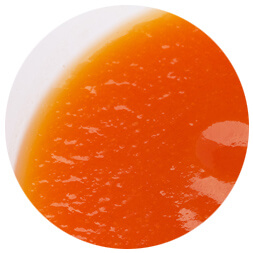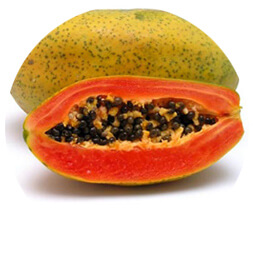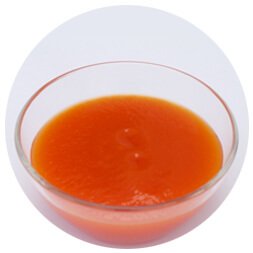A tropical fruit that was once considered exotic and rare is available practically round the year, and comes with literally an endless list of nutritional benefits. According to UNFAO, India is the largest of producer of this incredible fruit.
Processing Capacity
5MT of fruit per hour
PAPAYA



Available Calendar


Specifications
Physio-Chemical Specification
| Color | Red (Orangish) |
| Taste | Typical to Papaya |
| Other | Free from Foreign Matter |
| Total Soluble Solid (TSS) | Minimum 20 °Brix at 20 oC |
| Acidity (as Citric Acid) | 0.80 to 1.40% w/w |
| pH Value | 3.5 to 4.2 |
| Bostwick Consistency cm/30sec.@20oC | 2 to 6 |
| Preservative | None |
Microbiological Specification
| Total Plate Count (TPC) | <10 cfu/gm |
| Yeast | <10 cfu/gm |
| Mould | <10 cfu/gm |
| E. Coli | Absent/gm |
| Coliform | Absent/gm |
| Salmonella | Absent/25gm |
Packaging and Storage
| Packing | Aseptic bag with Polyliner kept inside painted widemouthed MS Drum. Net Weight 220 + 1 kg. |
| Shelf Life & Storage | 12 months at ambient temperature. Store in cool condition and avoid direct sunlight. |
Physio-Chemical Specification
| Color | Red (Orangish) |
| Taste | Typical to Papaya |
| Other | Free from Foreign Matter |
| Total Soluble Solid (TSS) | Minimum 8 oBrix at 20 oC |
| Acidity (as Citric Acid) | 0.40 to 0.80 % w/w |
| pH Value | 3.5 to 4.2 |
| Bostwick Consistency cm/30sec.@20oC | 8 to 12 |
| Preservative | None |
Microbiological Specification
| Total Plate Count (TPC) | <10 cfu/gm |
| Yeast | <10 cfu/gm |
| Mould | <10 cfu/gm |
| E. Coli | Absent/gm |
| Coliform | Absent/gm |
| Salmonella | Absent/25gm |
Packaging and Storage
| Packing | Aseptic bag with Polyliner kept inside painted widemouthed MS Drum. Net Weight 210 ± 1 kg. |
| Shelf Life & Storage | 12 months at ambient condition. Store in cool condition and avoid direct sunlight. |